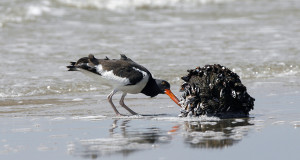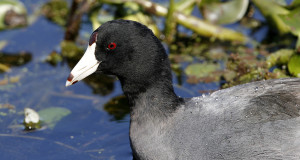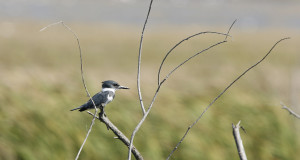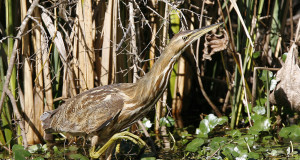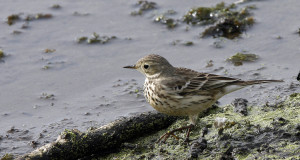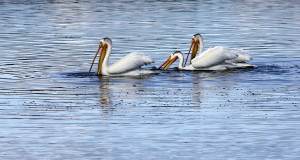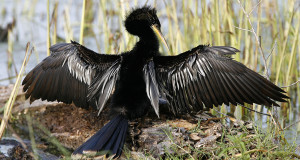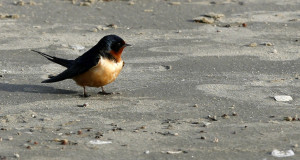Pileated Woodpeckers are among the largest birds in the forest - as big and black as a crow - with a black-and-white barred face and a striking triangular red crest. East Texas is at the edge of their range in the South.
Read More »American Oystercatcher
As the name suggests, American Oystercatchers specialize in shellfish, feeding on oysters, clams, barnacles and crabs. They often shuck oysters and clams the same way we do - prying the shell open with their stout knife of a bill.
Read More »American Coot
American Coots prove that not everything that looks and acts like a duck is a duck.
Read More »Belted Kingfisher
The Belted Kingfisher's head looks too big for its body. Its black bill is long and thick, and its plumage a powder blue, with a white collar across its throat. Its shaggy crown blows fashionably in the wind.
Read More »American Bittern
American Bitterns walk through the grass at an agonizingly slow pace, pausing for long intervals between each step, seemingly out of an abundance of caution.
Read More »American Pipit
American Pipits are similar to the larks but with longer legs, a more slender bill and a habit of bobbing their tail.
Read More »American White Pelican
Americans White Pelicans dwarf their cousin the Brown Pelican, with whom they sometimes congregate. They resemble flying boats in the air with their bulky white bodies, long orange bills and enormous wings edged above and below in black.
Read More »Anhinga
Anhingas are odd looking birds - both in the water and out. Their plumage is largely black, with distinctive white streaks on the wings and back. Their long, sinewy neck ends in a tapered yellow beak that they can snake all over their bodies as they preen.
Read More »Barn Swallow
Barn Swallows are almost aristocratic in appearance and flight, with a colorfully masked face, slender, pointed wings and long, forked tail.
Read More »Black Skimmer
Black Skimmers feed on small fish by flying low over the coastal shallows with the bottom of their orange-and-black bill slicing through the water. When their red and black bill strikes a fish, they snap it up.
Read More »
